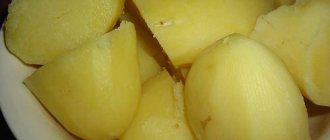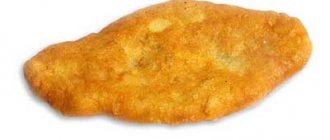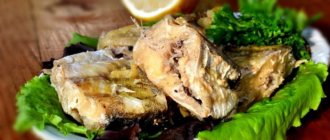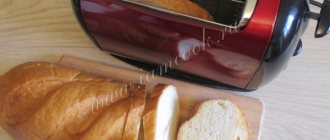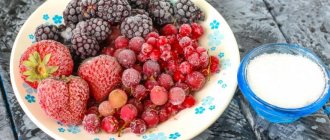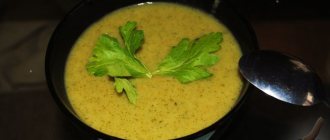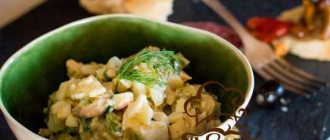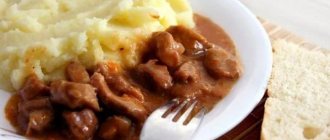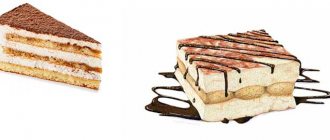Boiled potatoes: calorie content, benefits and harms, nutritional value
Potatoes are famous for their taste, nutritional value and beneficial properties. The vegetable, popular all over the world, can be boiled with or without its peel, made into purees and other delicacies. Serve the dish with salt, butter or vegetable oil, spices, chopped herbs. There are many options! That is why it is so important to know what the calorie content of boiled potatoes is, the BJU ratio and the benefits for the body.
Benefits of boiled potatoes
What are the beneficial properties of this boiled root vegetable? Why is he so valuable? Even boiled potatoes contain many useful vitamins and various elements that allow you to:
Also, boiled potatoes contain a lot of calcium, which has a beneficial effect on the skeletal system and its strengthening. The product is able to remove harmful substances from the body: toxins and waste.
Boiled potatoes also help remove harmful cholesterol from blood vessels. The root vegetable prevents the formation of blood clots and makes blood vessels more elastic. It prevents the risk of tumors (including cancer). Boiled potatoes are suitable for some dietary systems and help cope with colds.
Boiled potatoes
Boiled potatoes retain the beneficial properties and calorie content of the vegetable almost unchanged. The nutritional value decreases slightly, and the calorie content of the dish remains within 70-80 calories. Boiled potatoes are considered an excellent source of potassium and phosphorus.
The ability to cook potatoes is one of the most necessary skills for modern housewives. When preparing boiled potatoes, consider the following points:
- peeled potato tubers should be cut into medium-sized pieces: potatoes in this form will cook faster (than whole tubers), without losing a large amount of nutrients (like very small pieces);
- You should start cooking the potatoes in cold water, which will only lightly cover the tubers;
- The cooking time for potatoes is 25-30 minutes, but it can be reduced slightly by adding a small piece of butter to the water;
- It is best to salt potatoes at the end of cooking;
- It is better to start cooking young potatoes over low heat, checking their readiness, otherwise they may turn out watery.
Composition and nutritional value of boiled potatoes
All the beneficial properties of boiled potatoes are due to the unique chemical composition of the dish. To visualize this, it is better to indicate the composition of the product in the form of a table:
| Substance name | Content (in mcg, g, mg) |
| Vitamin B4 | 18,2 |
| Selenium | 0,3 |
| Ascorbic acid | 7,4 |
| Magnesium | 20 |
| Ash | 0,72 |
| Vitamin B9 | 9 |
| Water | 77 |
| Sodium | 5 |
| Vitamin B6 | 0,269 |
| Manganese | 0,14 |
| Calcium | 8 |
| Vitamin B2 | 0,019 |
| Sulfur | 17,1 |
| Beta carotene | 0,001 |
| Vitamin B1 | 0,098 |
| Phosphorus | 40 |
| Vitamin PP | 1,312 |
| Potassium | 328 |
| Copper | 167 |
| Vitamin E | 0,01 |
| Lutein+Zeaxanthin | 9 |
| Vitamin B5 | 0,509 |
| Iron | 0,31 |
| Alimentary fiber | 1,8 |
| Vitamin K | 2,2 |
The product also contains arginine, valine, sucrose, glucose, fructose, mono- and disaccharides, lysine, alanine and many other valuable components. But the indicated composition of boiled potatoes implies cooking without salt.
When creating a menu, many are interested in the ratio of BJU in boiled vegetables. Per 100 grams the product contains:
Boiled potatoes are also rich in starch and fiber, which have a good effect on the gastrointestinal tract.
Calorie content of boiled potatoes per 100 g
Now let's find out how many calories are in 100 grams of boiled potatoes. Peeled root vegetables, cooked without salt and other additives, provide 86 kcal for the indicated volume.
A low-calorie option is boiled potatoes in their jackets. There are 87 kcal per 100 grams of this dish. Considering that 1 pc. weighs just under 100 grams, we get the following indicators: 1 jacket potato contains about 80 kcal. Young potatoes may have fewer calories per 1 piece. But only because the root crop is not too large yet.
One of the popular ways to prepare this vegetable is pounding. How many calories are in mashed potatoes? Only 85 kcal per 100 grams. But this indicator is valid if the product is prepared without butter, milk and salt.
If you make full-fledged mashed potatoes with milk and butter, then such crushed potatoes will give 130 kcal per 100 grams. You can make the pound only with milk, then it will contain 106 units.
And by simply steaming a vegetable, you will get 73.7 kcal for the same 100 grams of potatoes. For information on how to properly cook potatoes, see the video recipe:
Source
How many calories are in boiled, fried, baked potatoes?
The dietary option for preparing vegetables includes boiling them (about 85 kcal). In terms of energy value, boiled potatoes are inferior to pasta, wheat bread, bananas and buckwheat. Read about the calorie content of buckwheat here. However, this only applies to cases where mayonnaise, cream sauce or butter is not added.
When boiled in the peel, the value remains almost unchanged (78 kcal). Nutritionists recommend cooking the vegetable “in its uniform,” since most of the beneficial elements are retained in the root vegetable.
The calorie content of baked potatoes is identical to that of boiled potatoes, but any additive increases these numbers. You can reduce the starch content by leaving the vegetable in cool water for several hours. Fried potatoes contain 3 times more calories (up to 200 kcal).
Read also: Viburnum pies made from yeast dough
The type of oil has a slight effect on the energy value: when cooking with olive, sunflower or butter, the numbers will be approximately the same. More information about the calorie content of vegetable oil can be found in our publication. French fries contain about 310 kcal, and in fast food restaurants, a serving of deep-fried vegetable will cost almost 280 kcal.
How many calories are in mashed potatoes with milk and butter?
Most people love mashed potatoes. Due to its high nutritional value, easy digestibility and inability to cause allergies, this dish is included in the menu of various children's, medical and health institutions. A 100-gram serving of mashed potatoes, prepared with milk and butter, contains :
It is difficult to talk about the calorie content of ready-made dishes that contain several ingredients. The energy value of mashed potatoes largely depends on the fat content of the milk used, as well as the amount of butter that is added to the dish.
Potato chips
There are so many recipes and ways to make real potato chips. All you need to try each method is 100 grams. potatoes. How much oil and spices to add is up to the cook to decide.
Potato chips can be cooked on the stove, in the oven, or even in the microwave. The classic recipe suggests baking the delicacy in the oven:
- in spicy oil (olive or unrefined sunflower) with garlic and dill, soak potatoes cut into slices for about half an hour;
- potato mugs are laid out on a baking sheet with paper in one layer, you can add salt and pepper if desired;
- the baking sheet goes into the oven preheated to 200 degrees;
- Cooking time for chips – from 20 minutes (depending on how crispy the circles should be).
Potato chips are a very high-calorie product. The calorie content per 100 grams of potatoes is about 500 kcal.
The calorie content of mashed potatoes largely depends on the energy value of the milk added to it and averages 83 kcal per 100 grams.
The algorithm for preparing mashed potatoes is extremely simple. Simply boil the potatoes, mash them and add milk (preferably hot) and a little butter to the resulting mass.
With cream cheese
Mashed potatoes are a great side dish for any meal. The classic recipe has long gained popularity among people all over the world, but it can also be improved by making the taste a little piquant. Expanding on the standard recipe, many cooks beat in egg whites or yolks, some use the whole egg to achieve the ideal consistency, but others enjoy unusual combinations of potatoes with cheese or heavy cream.
Read also How to determine the naturalness of honey when purchasing
Calorie content and nutritional value of mashed potatoes with milk and butter
Today, a healthy lifestyle has become very popular. Despite the fact that every third woman needs to lose weight, more than half of women watch their figure without eating junk food.
Counting calories helps them with this. For example, not everyone knows how many calories are in potatoes, because giving them up is very difficult when dieting. But the thing is that it is milk and butter that add calories to the dish, so these components should be abandoned.
Nuances in preparing mashed potatoes
Mashed potatoes are a tasty, satisfying, not too high-calorie dish. The calorie content of a simple puree with water is noticeably different from the calorie content of a dish with milk and butter; for a specific diet, it is important to know which type of puree is best suited and how to calculate the effect on the body’s daily energy balance.
How many kcal are in mashed potatoes?
The preparation of any dish should be approached very responsibly. Purchasing quality products is, of course, the most important point, but the algorithm of actions in the kitchen should also be thought out in advance.
If you are on a diet, calculate your calorie intake. Mashed potatoes with milk have an energy value of 90 kcal, and with butter - 120 kcal.
If these numbers don’t scare you at all, stock up on all the ingredients and start preparing the side dish.
Boil the peeled potatoes in salted water. Melt the butter and beat the chicken egg, prepare the milk. If you wish, you can add chopped dill and fried onions.
Place the hot potatoes in another container and chop them with a rolling pin, periodically adding milk, beaten egg, and melted butter.
Continue beating the mixture until you get mashed potatoes (calorie content per 100 grams will be 132 kcal).
French fries
The calorie content of French fries covers a quarter of the daily caloric intake needed by a person. Per 100 grams of potatoes prepared in this way, there are about 400 kilocalories.
Making golden crispy French fries at home is quite easy. In a saucepan with a thick bottom, the oil is heated to 180 degrees (when a potato block gets into this oil, it should sizzle and float to the surface). Cut into strips, washed, salted and dried potatoes are placed in oil for 3-4 minutes, and then removed with a slotted spoon. Excess oil is removed with a napkin.
Read also: What do decorative rabbits eat at home?
Chemical composition and nutritional value
The main ingredient of mashed potatoes is boiled and crushed potatoes.
To improve the taste of the dish, additional ingredients can be used such as:
Puree is used:
Calorie content of mashed potatoes
Mashed potatoes, the calorie content and nutritional value of which is determined by the ingredients and their quantity in the composition, has many preparation options.
The table shows an analysis of the chemical composition and nutritional value of classic puree and the calorie content of the finished dish:
| Components | Quantity, g | Calorie content, kcal | Proteins, g | Fats, g | Carbohydrates, g | Dietary fiber, g |
| Potato | 1000 | 820 | 20 | 1,3 | 131,2 | 14 |
| Cow's milk 3.6% fat | 250 | 162 | 8 | 9 | 12 | |
| Butter | 100 | 748 | 0.5 | 82,5 | 0,8 | |
| total weight | 1350 | 1730 | 28,5 | 92,8 | 144 | 14 |
| 1 serving | 150 | 192 | 3,2 | 10,3 | 16 | 1,6 |
| 100 | 128 | 2,1 | 6,9 | 10,7 | 1 |
Mashed potatoes contain fat- and water-soluble vitamins and minerals:
| Fat-soluble vitamins | ||
| Vitamin | Quantity per 100 g | % of daily value |
| A | 38 mcg | 4,2 |
| Beta carotene | 9 mcg | 0,2 |
| E | 1.6 mg | 11 |
| TO | 2 mcg | 1,7 |
| Water-soluble vitamins | ||
| WITH | 14 mg | 16 |
| IN 1 | 0.1 mg | 6,7 |
| AT 2 | 0.09 mg | 5 |
| AT 3 | 1.1 mg | 6,7 |
| AT 4 | 13.5 mg | 2,7 |
| AT 5 | 0.5 mg | 9,4 |
| AT 6 | 0.3 mg | 15 |
| AT 9 | 8.2 mcg | 2,1 |
| AT 12 | 0.06 mcg | 2 |
| Macro- and microelements | ||
| Calcium | 23.8 mg | 2,8 |
| Iron | 0.9 mg | 5 |
| Manganese | 0.15 mg | 7,5 |
| Magnesium | 24.1 mg | 6 |
| Phosphorus | 74.4 mg | 9,3 |
| Sodium | 19.6 mg | 1,5 |
| Potassium | 548 mg | 22 |
| Selenium | 08 mcg | 1,5 |
| Zinc | 0.4 mg | 3,1 |
| Copper | 125.2 mcg | 13 |
| Molybdenum | 7.8 mcg | 11 |
| Chromium | 9.1 mcg | 18 |
| Cobalt | 4.5 mcg | 45 |
Calorie content Mashed potatoes with milk and butter. Chemical composition and nutritional value.
Nutritional value and chemical composition of “Mashed Potatoes with Milk and Butter.”
The table shows the nutritional content (calories, proteins, fats, carbohydrates, vitamins and minerals) per 100 grams of edible portion.
| Nutrient | Quantity | Norm** | % of the norm in 100 g | % of the norm in 100 kcal | 100% normal |
| Calorie content | 113 kcal | 1684 kcal | 6.7% | 5.9% | 1490 g |
| Squirrels | 1.86 g | 76 g | 2.4% | 2.1% | 4086 g |
| Fats | 4.22 g | 56 g | 7.5% | 6.6% | 1327 g |
| Carbohydrates | 15.31 g | 219 g | 7% | 6.2% | 1430 g |
| Alimentary fiber | 1.5 g | 20 g | 7.5% | 6.6% | 1333 g |
| Water | 75.61 g | 2273 g | 3.3% | 2.9% | 3006 g |
| Ash | 1.5 g | ~ | |||
| Vitamins | |||||
| Vitamin A, RE | 38 mcg | 900 mcg | 4.2% | 3.7% | 2368 g |
| Retinol | 0.037 mg | ~ | |||
| beta carotene | 0.009 mg | 5 mg | 0.2% | 0.2% | 55556 g |
| Lutein + Zeaxanthin | 7 mcg | ~ | |||
| Vitamin B1, thiamine | 0.086 mg | 1.5 mg | 5.7% | 5% | 1744 g |
| Vitamin B2, riboflavin | 0.041 mg | 1.8 mg | 2.3% | 2% | 4390 g |
| Vitamin B4, choline | 13.5 mg | 500 mg | 2.7% | 2.4% | 3704 g |
| Vitamin B5, pantothenic | 0.468 mg | 5 mg | 9.4% | 8.3% | 1068 g |
| Vitamin B6, pyridoxine | 0.222 mg | 2 mg | 11.1% | 9.8% | 901 g |
| Vitamin B9, folates | 8 mcg | 400 mcg | 2% | 1.8% | 5000 g |
| Vitamin B12, cobalamin | 0.07 mcg | 3 mcg | 2.3% | 2% | 4286 g |
| Vitamin C, ascorbic acid | 6 mg | 90 mg | 6.7% | 5.9% | 1500 g |
| Vitamin D, calciferol | 0.2 mcg | 10 mcg | 2% | 1.8% | 5000 g |
| Vitamin E, alpha tocopherol, TE | 0.12 mg | 15 mg | 0.8% | 0.7% | 12500 g |
| Vitamin K, phylloquinone | 2 mcg | 120 mcg | 1.7% | 1.5% | 6000 g |
| Vitamin RR, NE | 1.072 mg | 20 mg | 5.4% | 4.8% | 1866 |
| Betaine | 0.3 mg | ~ | |||
| Macronutrients | |||||
| Potassium, K | 284 mg | 2500 mg | 11.4% | 10.1% | 880 g |
| Calcium, Ca | 24 mg | 1000 mg | 2.4% | 2.1% | 4167 g |
| Magnesium, Mg | 18 mg | 400 mg | 4.5% | 4% | 2222 g |
| Sodium, Na | 317 mg | 1300 mg | 24.4% | 21.6% | 410 g |
| Sera, S | 18.6 mg | 1000 mg | 1.9% | 1.7% | 5376 g |
| Phosphorus, P | 45 mg | 800 mg | 5.6% | 5% | 1778 |
| Microelements | |||||
| Iron, Fe | 0.26 mg | 18 mg | 1.4% | 1.2% | 6923 g |
| Manganese, Mn | 0.114 mg | 2 mg | 5.7% | 5% | 1754 g |
| Copper, Cu | 138 mcg | 1000 mcg | 13.8% | 12.2% | 725 g |
| Selenium, Se | 0.8 mcg | 55 mcg | 1.5% | 1.3% | 6875 g |
| Zinc, Zn | 0.27 mg | 12 mg | 2.3% | 2% | 4444 g |
| Digestible carbohydrates | |||||
| Mono- and disaccharides (sugars) | 1.43 g | max 100 g | |||
| Glucose (dextrose) | 0.29 g | ~ | |||
| Lactose | 0.71 g | ~ | |||
| Sucrose | 0.15 g | ~ | |||
| Fructose | 0.24 g | ~ | |||
| Essential amino acids | |||||
| Arginine* | 0.075 g | ~ | |||
| Valin | 0.107 g | ~ | |||
| Histidine* | 0.042 g | ~ | |||
| Isoleucine | 0.082 g | ~ | |||
| Leucine | 0.123 g | ~ | |||
| Lysine | 0.106 g | ~ | |||
| Methionine | 0.033 g | ~ | |||
| Threonine | 0.071 g | ~ | |||
| Tryptophan | 0.033 g | ~ | |||
| Phenylalanine | 0.083 g | ~ | |||
| Nonessential amino acids | |||||
| Alanin | 0.058 g | ~ | |||
| Aspartic acid | 0.374 g | ~ | |||
| Glycine | 0.052 g | ~ | |||
| Glutamic acid | 0.329 g | ~ | |||
| Proline | 0.101 g | ~ | |||
| Serin | 0.077 g | ~ | |||
| Tyrosine | 0.074 g | ~ | |||
| Cysteine | 0.02 g | ~ | |||
| Sterols (sterols) | |||||
| Cholesterol | 11 mg | max 300 mg | |||
| Fatty acid | |||||
| Trans fats | 0.149 g | max 1.9 g | |||
| monounsaturated trans fats | 0.135 g | ~ | |||
| Saturated fatty acids | |||||
| Saturated fatty acids | 2.613 g | max 18.7 g | |||
| 4:0 Oil | 0.157 g | ~ | |||
| 6:0 Kapronovaya | 0.102 g | ~ | |||
| 8:0 Caprylic | 0.064 g | ~ | |||
| 10:0 Kaprinovaya | 0.126 g | ~ | |||
| 12:0 Lauric | 0.131 g | ~ | |||
| 14:0 Miristinovaya | 0.38 g | ~ | |||
| 16:0 Palmitinaya | 1.114 g | ~ | |||
| 17:0 Margarine | 0.025 g | ~ | |||
| 18:0 Stearic | 0.508 g | ~ | |||
| 20:0 Arakhinovaya | 0.006 g | ~ | |||
| Monounsaturated fatty acids | 1.07 g | min 16.8 g | 6.4% | 5.7% | |
| 16:1 Palmitoleic | 0.044 g | ~ | |||
| 18:1 Oleic (omega-9) | 1.021 g | ~ | |||
| 20:1 Gadoleic (omega-9) | 0.005 g | ~ | |||
| Polyunsaturated fatty acids | 0.199 g | from 11.2 to 20.6 g | 1.8% | 1.6% | |
| 18:2 Linolevaya | 0.166 g | ~ | |||
| 18:3 Linolenic | 0.033 g | ~ | |||
| Omega-3 fatty acids | 0.033 g | from 0.9 to 3.7 g | 3.7% | 3.3% | |
| Omega-6 fatty acids | 0.166 g | from 4.7 to 16.8 g | 3.5% | 3.1% |
The energy value of mashed potatoes with milk and butter is 113 kcal.
- cup = 210 g (237.3 kcal)
Primary source: USDA National Nutrient Database for Standard Reference. Read more.
** This table shows the average levels of vitamins and minerals for an adult. If you want to know the norms taking into account your gender, age and other factors, then use the “My Healthy Diet” application.
What are the benefits of mashed potatoes?
Mashed potatoes are a vegetable dish. Due to the presence of beneficial properties and easy digestibility by the body, it is one of the first to be introduced into the diet of infants. Mashed potatoes are often recommended by doctors for use in the presence of certain diseases. A properly prepared dish has beneficial properties.
Essential and non-essential amino acids are necessary for the healthy functioning of the body and increase its endurance.
The root vegetable contains almost all amino acids found in foods of plant origin, in particular:
The puree contains a fairly large amount of vitamin C, which is why it is considered an effective prevention of scurvy.
High starch content in:
For this reason, puree is included in the menu of diets recommended by doctors for peptic ulcers, gastritis, disorders and disorders of the digestive system.
A high concentration of potassium contributes to a positive effect on the condition of bones, blood vessels, and heart function. Mashed potatoes are one of the main dishes on the menu for kidney and heart diseases. The action of vitamins A and group B improves the functioning of the brain and nervous system. Potato nutrients help strengthen and stimulate memory.
Beneficial features
Potatoes, which are completely ordinary and familiar to everyone, are a storehouse of useful substances. Its rich composition contains a significant amount of proteins and phosphorus, as well as amino acids necessary for the functioning of the body.
Read also: How to replant cactus babies
Potatoes are famous for their high content of phosphorus and potassium. Potassium actively participates in metabolic processes, promoting the removal of excess fluid from the body. This property is useful for people suffering from heart and kidney diseases, whom doctors and nutritionists advise to follow a special potato-egg diet.
Vitamin C, contained in large quantities in potatoes, helps maintain the elasticity of blood vessels and also reduces the risk of respiratory diseases. The beneficial effects of vitamin C on the nervous system are also known. In addition to vitamin C, potatoes contain vitamins B, A, E and PP.
Potatoes are one of the healthiest vegetables that help fight stomach and intestinal diseases. And the most famous component of its composition - starch - even helps improve memory by reducing cholesterol in the blood and liver.
The best recipes for diet
In addition to traditional types of purees, there are other low-calorie recipes. The presented options can be consumed as an independent dish or as a side dish.
When preparing purees that involve adding liquid (milk, cream, water), it is recommended to add it gradually. This way you can control the consistency of the dish.
Puree with cream and Parmesan cheese
For preparation you need:
The dish is designed for 9 servings of 150 g (187 kcal). 100 g of product contains 124 kcal. Cream gives the potatoes a delicate and creamy consistency, parmesan will make the taste brighter.
The dish goes well with light vegetable salads.
Mashed Potatoes with Green Onions
To make puree with green onions, you will need:
100 g of the finished dish contains 116 kcal per 100 g, a serving of 150 g contains 168 kcal.
The puree is prepared as follows:
The most high-calorie component of this recipe is butter. If desired, you can exclude this ingredient from the recipe or reduce its amount by adding a little potato broth to the mashed potatoes.
Puree with garlic and dill
You need to prepare:
The calorie content of 100 g of serving will be about 101 kcal.
The cooking process consists of the following steps:
Due to the use of garlic and dill, the finished puree has a bright aroma and taste.
Mashed potatoes with egg and milk
It is preferable to use homemade eggs and milk for this recipe.
The complete list of required products includes the following ingredients:
The calorie content of mashed potatoes will be 108 kcal for every 100 g.
Mashed potatoes with champignons
The dish includes:
Mashed potatoes, the calorie content of which will be about 110 kcal per 100 g, due to the presence of mushrooms, turns out to be more nutritious and satisfying. The recipe is for 12 servings of 150 g (166 kcal).
Mushrooms and garlic can be replaced with fried carrots and onions.
Gravy for potatoes
Sauces for mashed potatoes can be prepared:
Beef gravy
To prepare meat gravy you need:
100 g of the finished dish contains about 153 kcal.
Depending on preference, the meat can be cut into large pieces. This will make it feel better.
Vegetable gravy
Vegetable sauce consists of:
Calorie content will be approximately 118 kcal per 100 g
Vegetable gravy can be served either cold or hot.
Mushroom sauce
The complete list of components is as follows:
This sauce is perishable, so it is not recommended to prepare it for future use. 100 g of sauce – 147 kcal.
Calorie content of mashed potatoes
The calorie content of mashed potatoes can be low if milk with 0% fat or water is added during the process. One 100-gram serving contains about 85 kcal. If you choose fattier milk, the indicator can increase to 35 units. Any oil significantly increases the nutritional value of a dish.
The puree will have a calorie content of 130 kcal if you add just one teaspoon of butter (the numbers vary depending on its fat content).
You can reduce the energy value if you cook your favorite dish in dishes coated with ceramic, marble or Teflon. In addition, it is important to ensure that no more than 10 g of fat-containing product is consumed per 500 g of root vegetables. Read about the nutritional composition (BJU) of potatoes in our article.
